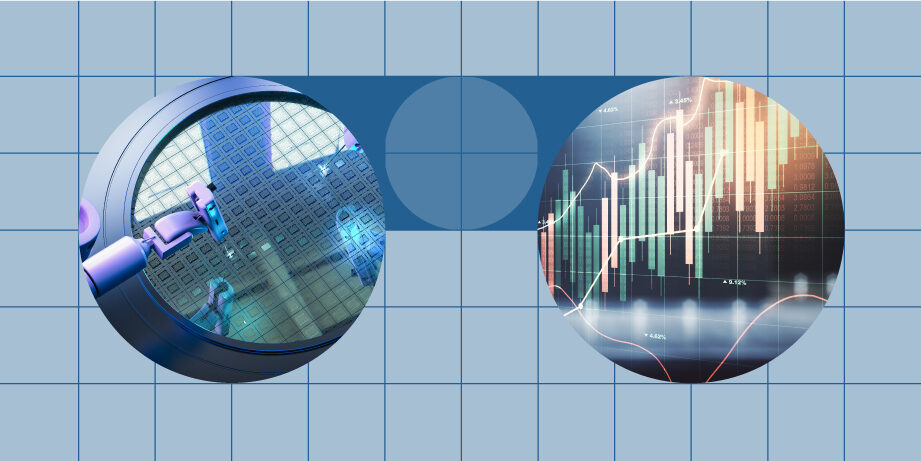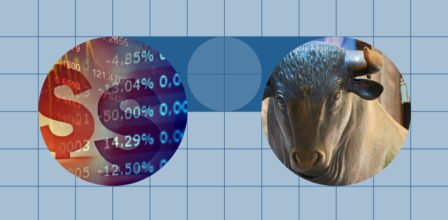Market commentary equities: NVIDIA and the concentration on the stock markets
A new megatrend, artificial intelligence (AI), has so far dominated stock markets in 2023. AI is another catalyst for the historic wave of concentration in global equity markets. Historical comparisons show the extent to which the market is currently being driven by a single theme.


Mark Frielinghaus, CFA
Portfolio Manager Equities
While technology stocks were already the main drivers of positive stock markets in the years of the pandemic, this trend has intensified again in 2023 due to expectations of future technology AI. NVIDIA is a good example of this. Several factors are at play here. First and foremost is the growth market of artificial intelligence, which is driving change in all sectors of the economy. As a graphics card manufacturer, NVIDIA supplies the fast memory chips needed for this, and demand is growing rapidly. Automated recommendation systems, speech recognition and medical imaging are just some of the applications for these semiconductors, for example in the automotive and medical industries. The chipmaker is also benefiting from growth in the gaming industry and the metaverse.
After NVIDIA raised its earnings guidance significantly this year, the share price has risen almost exponentially. NVIDIA is now up 190%(!) this year. Analyst price targets have doubled in the space of a few weeks and the market capitalisation has risen to over $1 trillion, something only 5 companies have achieved. The share price performance over the last 5 years is now over 500%. One might ask how sustainable these gains are.
High share price growth of just a few stocks
Looking at the distribution of returns on global equity markets, the huge concentration in a few positive performers is striking. Overall, equity market performance remains subdued this year. At the end of the first half of the year, the equally weighted MSCI global index was up just 6%. Up to the beginning of June, this figure was virtually unchanged year-on-year. By contrast, the market-cap-weighted index has already returned 15%. This means that within the index there is a strong return differential between large and small caps. There is also a strong sector effect. Technology stocks are set to deliver enormously high returns in 2023. The NASDAQ 100 Index, for example, has a performance of around 39% in the current year. Once again, NVIDIA stands out at 190%.
Figure 1: YTD performance of global indices and NVIDIA
The picture is even more extreme when the index return is decomposed into the weighted contributions of individual stocks. In the first half of the year, the MSCI World returned 15% (in USD). NVIDIA, Apple, Microsoft, Alphabet, Amazon and Meta accounted for 7.3% of this performance. The remaining 1,500 stocks in the index contributed a return of 8%.
Gold-rush mood in the AI sector
There is also a spread within technology stocks depending on how close they are to the AI trend. In addition to NVIDIA, big tech companies such as Apple, Meta, Amazon and Microsoft are benefiting as they will be investing heavily in this future technology. As a result, they will be NVIDIA’s main customers in the coming years, provided the company can defend its exceptional position in the semiconductor segment. Since NVIDIA is selling the “tools” for the AI model of the future, the well-worn gold rush analogy can be drawn. The more companies that jump on the AI bandwagon, the more successful NVIDIA will be in selling its products.
Figure 2: YTD performance of US indices and selected technology stocks
The outperformance of the NASDAQ technology index relative to broad market indices illustrates the clear sector link to technology and in particular artificial intelligence. Interestingly, by 2023, the performance of almost all sectors can be directly derived from an AI reference. Figure 3 first shows the extent to which AI is relevant to companies in certain sectors, measured by the number of times the term is mentioned in the presentation of company figures. As expected, technology companies, media stocks and online retailers are already heavily involved in this area. If we now compare the distribution of returns across sectors in 2023, there is a clear correlation. Sectors that have little to do with AI technologies, such as utilities, mining stocks, oil stocks and food producers, are the weakest performers in the current year, with negative returns in some cases, while technology and online stocks are booming.
Figure 3: AI reference in earnings calls, sector returns YTD
The topic of artificial intelligence is thus another trigger for the historic wave of concentration in global stock markets. After the bursting of the TMT bubble in 2000, concentration, as measured by the weight of the 10 largest stocks on the stock market, settled at a level of between 10% and 12%. In recent years, concentration has risen sharply, driven by strong earnings growth but also by the ambitious valuations of leading technology stocks such as Apple, Microsoft, Google, etc. This trend was exacerbated by the Covid pandemic, as many business models were forced to move to the digital world.
After a brief correction in 2022, the current year has seen a renewed rally on the back of AI, which has pushed the concentration measure to an all-time high of around 22%. This is also confirmed by looking at the combined weight of the 5 largest stocks in the US S&P 500 index. Current concentration levels were last seen in the 1970s when a handful of companies, the so-called Nifty Fifties, led the stock market while the broad market lagged behind. Concentration then fell sharply over the following decade, accompanied by significant underperformance by the index heavyweights.
Figure 4: Concentration on the stock market in historical comparison
High valuation level – materialisation pending
Historical comparisons show how much the market is currently driven by a single theme and are a warning sign for future returns. Current valuation levels are at long-term highs. The current P/E ratio of the NASDAQ is only 3.4%, down from 4.5% at the beginning of the year. By historical standards, this is an extraordinarily low return for taking stock market risk. The situation is exacerbated by the simultaneous sharp rise in interest rates on fixed income investments, which now offer yields in excess of 5% in the US and other regions. The NASDAQ’s price-to-book ratio of over 7 also shows the extent of current valuations.
The ratios for NVIDIA are even more extreme. Here, the current P/E ratio is 205 and the P/B ratio is 42. This means that at current earnings, an investor would have to wait over 200 years to recoup their capital! In other words, even if the company manages to increase its annual profits tenfold in the near future, it will still take 20 years to recover the share price on an earnings basis.
All in all, current share prices reflect enormous growth fantasies that have yet to materialise. Cautious investors would be well advised to continue to rely on broadly diversified portfolios to avoid cluster risks.


